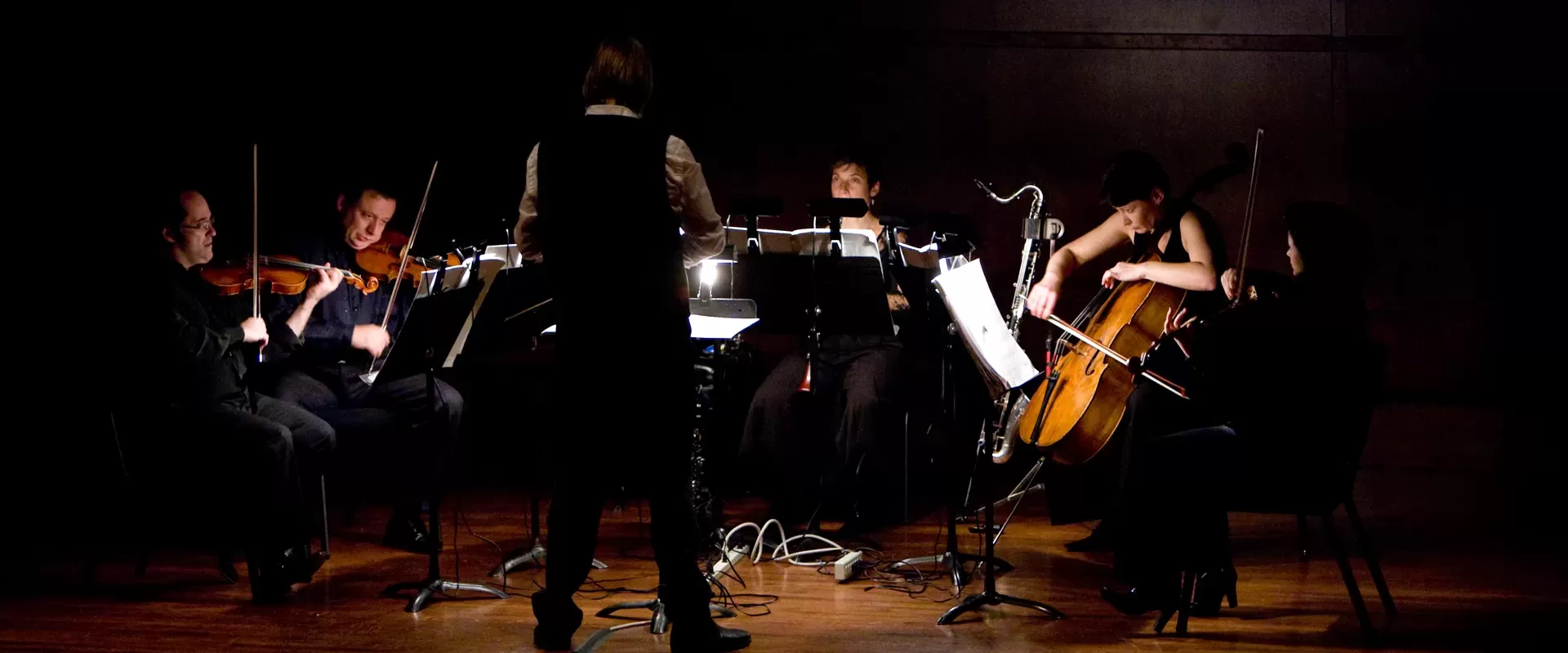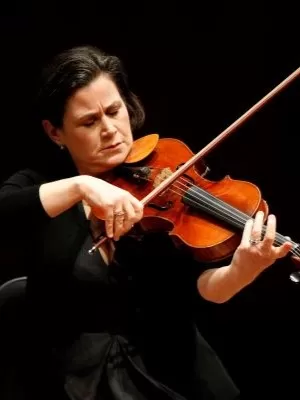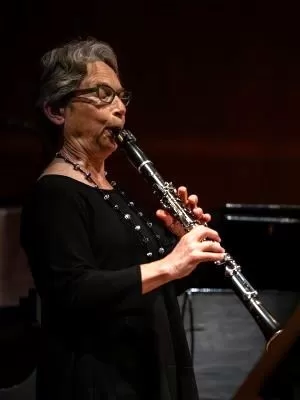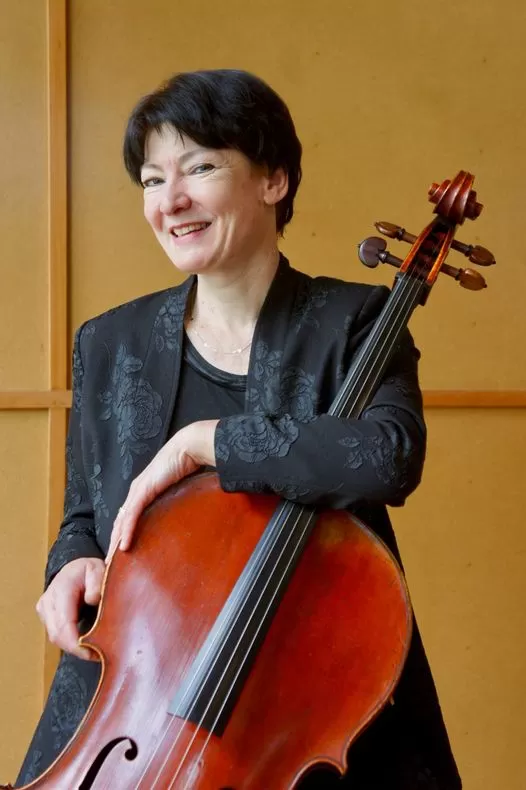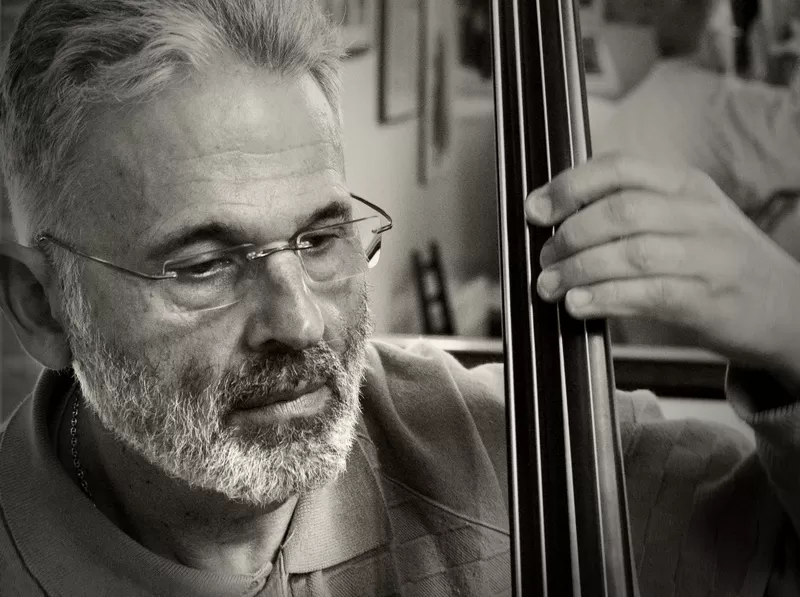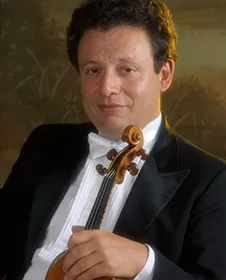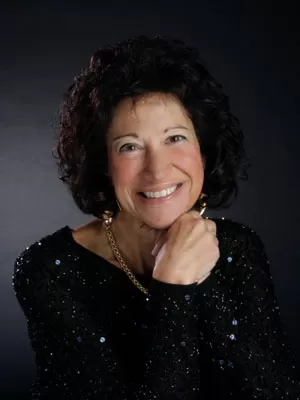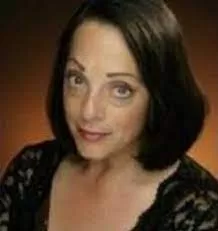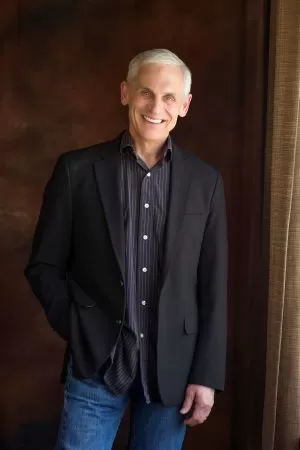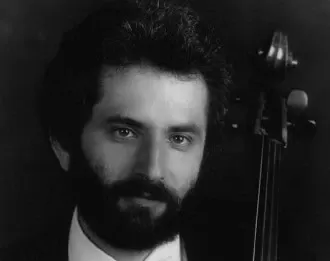Nov 6, 2000 - 12:00 pm
| Passacaglia and Fugue (1944,Terezín) | Hans Krasa (1899-1944, Auschwitz) |
|---|---|
| Mikhail Shmidt, violin Susan Gulkis, viola David Tonkonogui, cello |
|
| The Unknown Kurt Weill: Three Songs | Kurt Weill (1900-1950) |
| Julie Mirel, mezzo soprano Mina Miller, piano |
|
| Ruth Elegy (1960) | Franz Waxman (1906-1967) |
| David Tonkonogui, cello Mina Miller, piano |
|
| Four Scenes of Childhood (1948) | Franz Waxman (1906-1967) |
| Leonid Keylin, violin Mina Miller, piano |
|
| The Song of Terezin: The Little Mouse (1965) | Franz Waxman (1906-1967) |
| Leonid Keylin, violin David Tonkonogui, cello Mina Miller, piano |
|
| Holocaust 1944 (1999) World Premiere |
Lori Laitman (b.1955) |
| Erich Parce, baritone Gary Karr, double bass |
|
| "Der Golem" (1997) Zeks Yiddishe Lider un Tantz | Betty Olivero (b. 1954) |
| Laura DeLuca, clarinet Mikhail Shmidt, violin Leonid Keylin, violin Susan Gulkis, viola Mara Finkelstein, cello |
|
Passacaglia and Fugue (Terezín,1944) - Hans Krasa (1899-1944, Auschwitz)
As a resident of Czechoslovakia, Hans Krasa could feel relatively safe from Nazi domination until his native land fell to German occupiers in 1938. Born in Prague in 1899, Krasa chose to remain in Prague even when doing so put his life in jeopardy.
Krasa worked under his teacher Alexander Zemlinsky (also Arnold Schoenberg's teacher) at the Neues Deutsches Theater (New German Theatre) in Prague. When Zemlinsky left his post as opera director there to go to Berlin in 1927, Krasa followed him, but it was in Prague that Krasa's first opera, Verlobung im Traum (Dream Betrothal) was staged in 1933. The work was awarded the Czechoslovak State prize. By this time, Krasa's music had been performed and reviewed in Paris, Zurich, and as far away as Boston.
Discrimination against Jews in Czechoslovakia after the German occupation culminated in the creation in 1941 of the infamous Terezín concentration camp. A town-sized military fortress some 35 miles north of Prague, built in 1780 by the Emperor Josef II and named in honor of his mother, Maria Theresia, Theresienstadt (as the Germans called it) was a propaganda tool, a "model city" the Nazis used to show how well Jews were faring. A visit from the Red Cross was met with staged performances of happy people enjoying a rich cultural life. In fact, this was the place where artists and musicians in great numbers were sent, but all who lived there faced disease and starvation and the constant dread of assignment to the next train to Auschwitz.
Krasa was sent to Terezín on August 10, 1942. While there, he worked as leader of the music section of the camp's Administration of Leisure Activities, presenting and composing music. A children's opera, Brundibar, which he had composed before the war, received at least 55 performances by the children of the ghetto, no doubt lifting many spirits. In addition to the Passacaglia and Fugue, Krasa's surviving work from his compositions during his internment in Terezín consists of his settings of Three Rimbaud Songs, an Overture for small orchestra, and another string trio, Tanz.
The passacaglia, based on an antique dance, is a musical form in which a theme is introduced unadorned, and then repeated many times as a basis for variations. The cello introduces the languid, melancholy tune in 3/4 time. Held by the cello for a good many measures, the tune finds its way into the higher strings as tension builds and then dissipates. An agitated fugue, based on the passacaglia, bursts in and rushes toward a breathless end. This was Krasa's last composition, completed August 7, 1944. Two months later, he left Terezín on a transport to Auschwitz, where he was gassed, along with Viktor Ullmann, Pavel Haas, and other composers whose names should have become more familiar to us today.
Nanna’s Lied (1939) - Kurt Weill (1900-1950)
Und was bekam des Soldaten Weib? (1943)
Wie lange noch (1944)
Kurt Weill was born with the 20th century on March 2, 1900. During his fifty years, Weill's music would become the sound of the Weimar Republic and, later, the indicator of the future on the American musical stage.
A cantor’s son in Dessau, Weill was fully conscious of his Jewish roots, and did not repress the Jewish side of his persona while working in the Weimar republic. He combined the jobs of synagogue organist, music tutor, tavern pianist and radio music critic before finding his calling in collaborations for the stage. A quiet, intense intellectual, he had written two symphonies, some chamber music, and a couple of short operas before immersing himself in the effort to create a new kind of musical theatre. With the radical playwright Bertolt Brecht, Weill swept a heady era into Berlin, combining jazz idioms with social commentary. Their resurrection of a two-hundred year old English play created a sensation as The Threepenny Opera. The unique, world-weary voice of its star, the singing actress Lotte Lenya, became Weill's signature sound, and Lenya became his wife. When an impending Gestapo raid in 1933 spurred Weill to a hasty departure from Germany, he and Lenya, by that time divorced, got back together in Paris. When Weill answered America's invitation, Lenya joined him. They settled in New York.
Weill's invitation to America came in the form of an ambitious idea presented in 1934 by Meyer Weisgal to create a musical biblical morality play expressing the spiritual origins and the eternal destiny of the Jewish people. A talented Zionist fundraiser, Weisgal connected Weill with two other celebrated German-Jewish emigrants, the writer Franz Werfel and the director Max Reinhardt. Eager to welcome Jewish talents now unwelcome in Germany, and also to increase Jewish pride in a dark time, Weisgal imagined the great Bible stories coming to life on a stage. The Eternal Road, when it finally premiered in New York in 1937, required a mountain built up to the rafters of the stage, set for two hundred singing actors. The project garnered enthusiastic reviews and ran for months.
Weill was profoundly disturbed by the Nazi genocide in Europe, and sought to bring attention to the Holocaust. He collaborated with playwright Moss Hart on a 1943, Jewish pride pageant, We Will Never Die. The production featured many great American talents of stage and screen, and played to 20,000 people in Madison Square Garden.
After Weill's untimely death from a heart attack in 1950, Lenya revived her career in the effort to promote his legacy. Impressed by the soprano Teresa Stratas' interpretation of Weill's opera and theatre music, Lenya offered her a number of unpublished songs that she had guarded since her husband's death. This collection of fourteen songs, recorded by Stratas and published in 1982 after Lenya's death, has since been referred to as "The Unknown Kurt Weill." These three German songs are drawn from the wartime years, and reflect Weill's important collaboration with lyricists Brecht and Mehring. Of all the songs in the collection, Lenya's favorite was Nanna's Lied. Although it had been written for her, she never attempted to sing it. The 1943 song What Did the Soldier's Wife Receive?, with lyrics by Brecht, was broadcast to Europe via shortwave radio from a New York studio, and was intended to demoralize Nazi soldiers.
Ruth Elegy (1960) - Franz Waxman (1906-1967)>
Four Scenes of Childhood (1948)
The Song of Terezin: The Little Mouse (1965)
One of the most prolific composers of film music in the history of Hollywood, Franz Waxman was born in Koenigshuette, Upper Silesia, Germany on December 24, 1906.
Waxman had launched a promising career in Berlin before starting over in the United States. A talented youngster who pursued advanced musical studies in Dresden and Berlin, he worked as a pianist and orchestrator in a jazz band in 1920s Berlin. He orchestrated the musical score for the 1930 Marlene Dietrich film The Blue Angel, and worked with Fritz Lang on Liliom. In 1934, after Nazi thugs beat him up on a Berlin street, Waxman left for America, or more precisely for Hollywood. Snatched up by MGM, he embarked upon a thirty-two year career of composing and conducting that yielded 144 movie scores, including The Bride of Frankenstein, Peyton Place, Rebecca, and Sayonara. Waxman's Hollywood career brought him twelve Oscar nominations; he won two consecutive Academy Awards, for Sunset Boulevard (1950) and A Place in the Sun (1951).
Like his countryman Erich Wolfgang Korngold, Waxman gave to American motion pictures the music that Europe had brought him up to write. The thrilling, lush orchestrations which have come to be associated with a "Hollywood" sound are in fact a legacy bequeathed to American culture from the continent, where a generation of whirling creativity was being snuffed out.
In addition to Waxman's film career, his life in Hollywood included a dedication to serious music. He founded the Los Angeles International Music Festival in 1947, creating opportunities for West Coast audiences to enjoy both classics and new music, including premieres by composers as diverse as Bernstein, Stravinsky and Shostakovich. As a guest conductor, he appeared with orchestras around the U.S., as well as in Europe and Israel.
Waxman scored a 1960 film, The Story of Ruth, which moved his friend, the celebrated cellist Gregor Piatigorsky, to ask for an arrangement as a concert piece. Waxman never completed the commission, but through the efforts of his son, John, the work has been arranged for cello and piano by Angela Morley. The biblical Book of Ruth tells a story of love and commitment in the face of challenge. The Ruth Elegy had its U.S. premiere in April 1998 with the Los Angeles Jewish Symphony.
The violin and piano miniatures Four Scenes of Childhood were composed in 1948 for Jascha Heifetz, another émigré working in Los Angeles, on the occasion of the birth of his son Jay. The manuscript was discovered after the composer's death, and has only recently been made available. Its innocent melodies and capriciously playful moods are in stark contrast to Waxman's later setting of a scene from Terezín childhood. The Little Mouse, a piano trio arrangement of a song from his cantata The Song of Terezín, is based on poetry from I Never Saw Another Butterfly, a collection of poetry and art by children interned in Terezín. 15,000 children under the age of fifteen passed through Terezín, but less than 100 survived. The tender drawings and paintings, and the wrenching words of the Butterfly poems, have inspired numerous performers and composers. Commissioned by the Cincinnati May Festival to compose something based on a literary work about and involving children, Waxman chose eight of these poems and set them for children's choir, mixed choir, mezzo-soprano and orchestra, in what was to be the last work he conducted. The Little Mouse is the only song in the collection which has been arranged for chamber ensemble.
Holocaust 1944 - Lori Laitman (b. 1955)
World Premiere: November 6, 2000, Benaroya Hall, Seattle, WA at Music of Remembrance’s Kristallnacht Commemoration concert.
Lori Laitman offers the following notes:
"Holocaust 1944 is a song cycle for baritone voice and double bass, composed for baritone Sanford Sylvan and doublebassist Gary Karr. I had been intending to compose a piece for Gary Karr (who had been my husband's teacher many years before), and was searching for an appropriate theme. Around the same time, I made the acquaintance of Sandy Sylvan. Sandy had heard my Holocaust song cycle I Never Saw Another Butterfly (a soprano voice and alto saxophone setting of poems by children who were killed in the Holocaust), and he encouraged me to compose another piece for voice and solo instrument. The idea of composing another Holocaust themed song cycle came into focus -- but this time, I chose poetry with a darker slant, appropriate to the darker timbres of a baritone voice and a double bass.
The seven poems I use were chosen from the book Holocaust Poetry, edited by Hilda Schiff and published by St. Martin's Griffin in New York. The poems are by five different poets: Tadeusz Rozewicz (Poland), Anne Ranasinghe (Sri Lanka), Karen Gershon (England), David Vogel (Russia), and Jerzy Fikowski (Poland). My goal as a composer is to be true to the spirit of each poem, and to enhance its emotional content by my musical settings. By setting the words to music and having the music performed, the poetry is brought before a new audience -- that of the concert hall. These poems are important poems, and any new audience becomes an important factor.
My own life was not directly touched by the Holocaust. However, each of these poet's lives were directly touched. Their tales enable us to identify with them, and through this identification the horror of the Holocaust becomes more real. From the frustration found in the opening song, I Did Not Manage to Save, to the tale of the baby rescued from the ghetto, Both Your Mothers, to mass murder, Massacre of the Boys, leading to the final song of futility and despair (and from which the piece takes its title), this cycle creates an album of pain, hope, futility, life, and death. And hopefully it teaches the lesson of the Holocaust once again -- Never Again!"
Zeks Yiddishe Lider un Tantz from The Golem (1997) - Betty Olivero (b. 1954)
Betty Olivero offers the following notes:
“Der Golem: Zeks Yiddishe Lider un Tantz is the second movement of an adaptation of the original film score for clarinet and string quartet written for Paul Wegener’s 1920 silent expressionist film Der Golem: Wie er in die Welt kam. The work’s 1997 world premiere, with a screening of the Wegener film, was performed by clarinetist Giora Feidman and the Arditti Quartet at the opening of the Silent Film Festival in Vienna.
The present abridged version of the original score is intended for concert performances of the music without the film. This version preserves the main musical themes and motifs that accompany the various characters and scenes in the film from the old Golem legend: The creation of the Golem by Rabbi Low; the love scenes between the Rabbi’s daughter and a young courtier; the destruction of the emperor’s palace; the apocalyptic fire that consumes the town’s squares, and the crowd praying and shouting for forgiveness and deliverance in Synagogue. Ecstatic Freylekh Klezmer musical sections accompany the village scenes, while the traditional melody Place Me Under Thy Wing appears as a motto tune at the film’s two most dramatic moments: first, when Rabbi Low succeeds in breathing the spirit of life into the Golem, whereupon the Golem opens its eyes and looks at his creator in surprise; second, to accompany the expressions of warmth and longing in the Golem’s face when a young girl approaches offering him a flower.”
